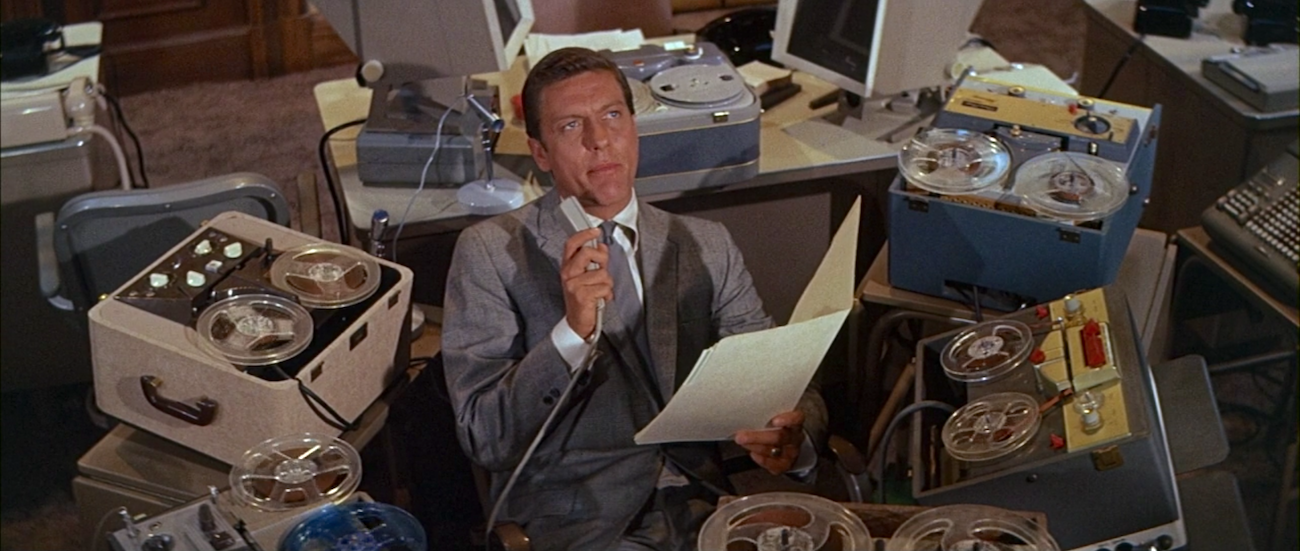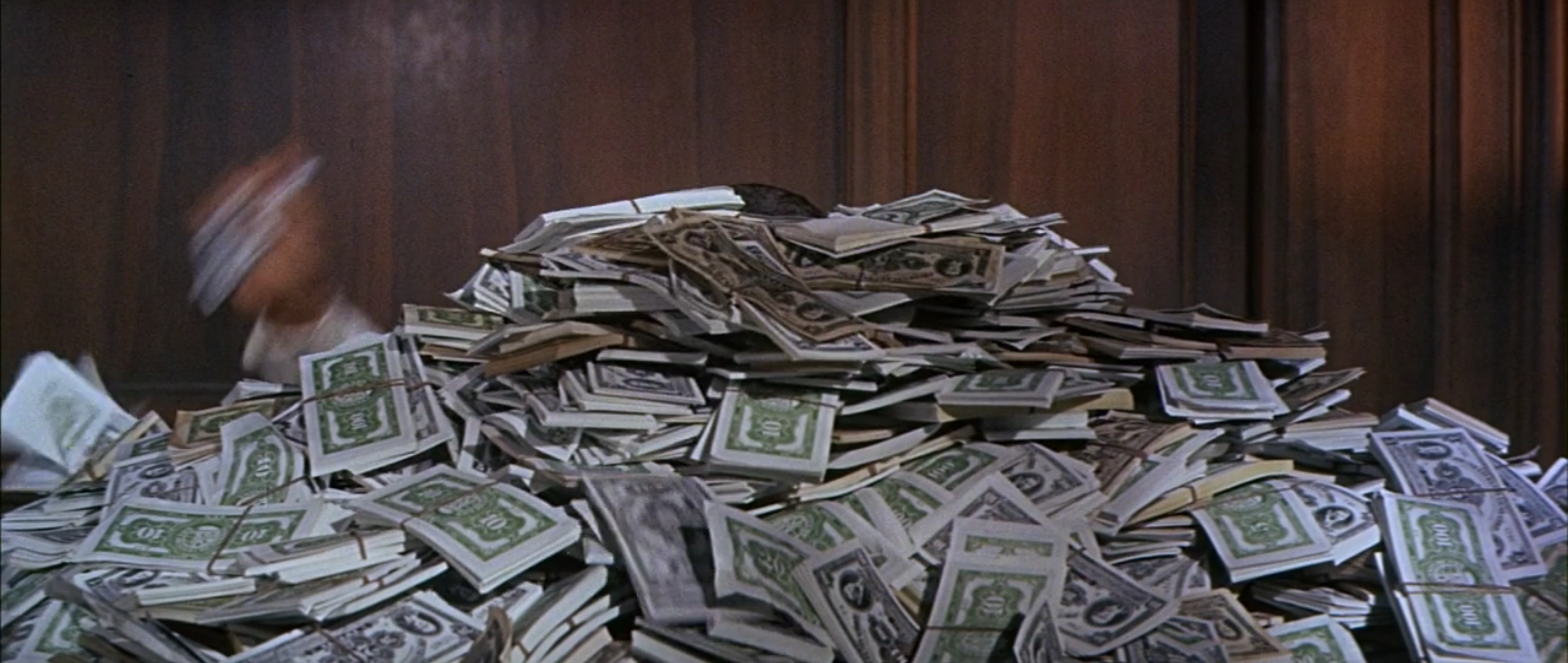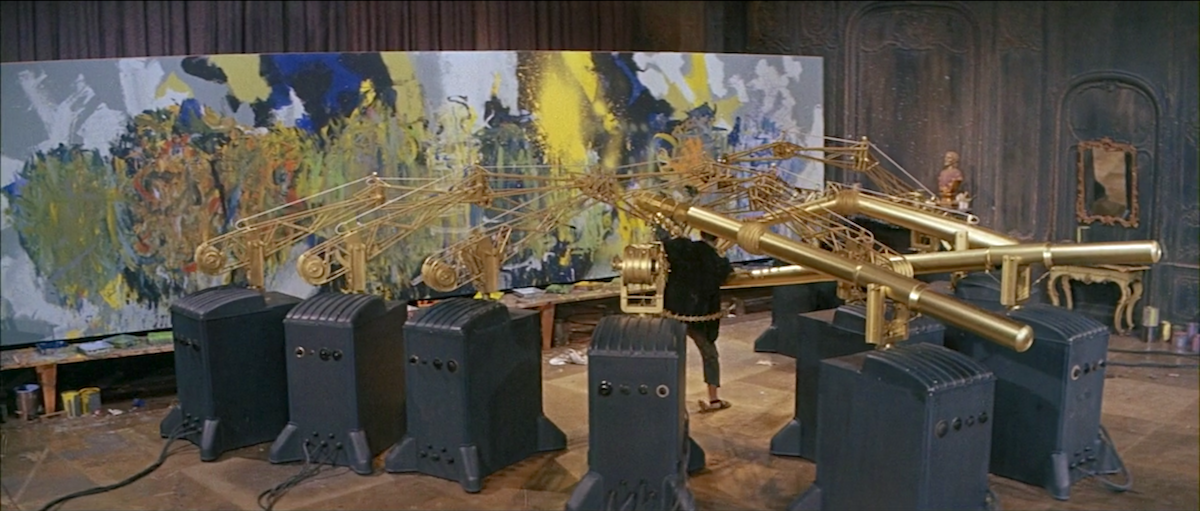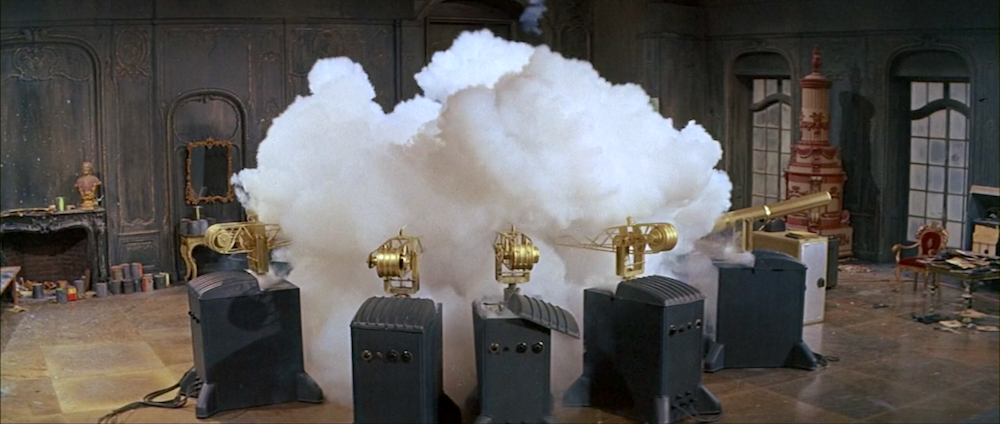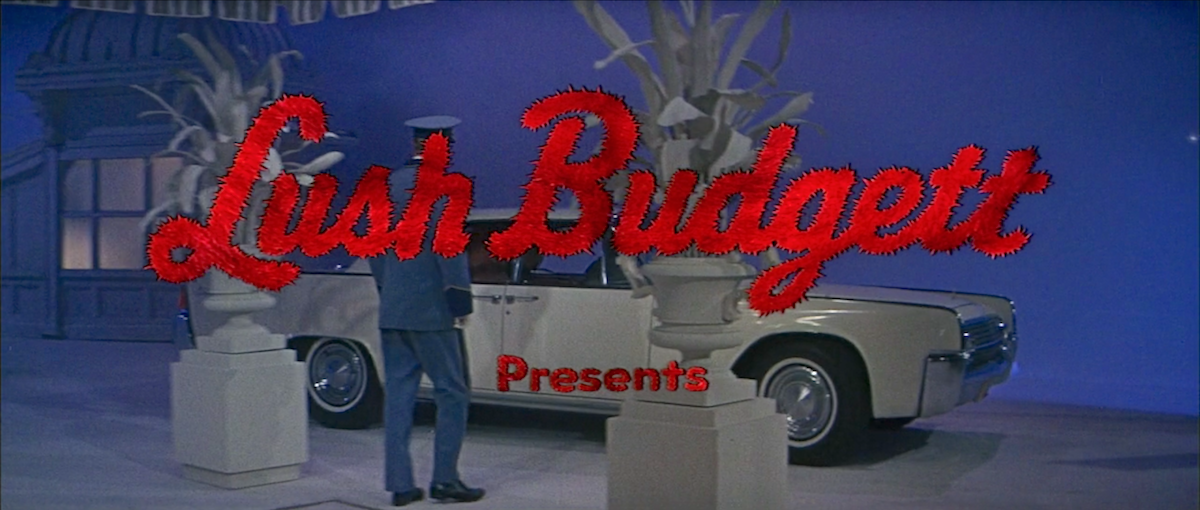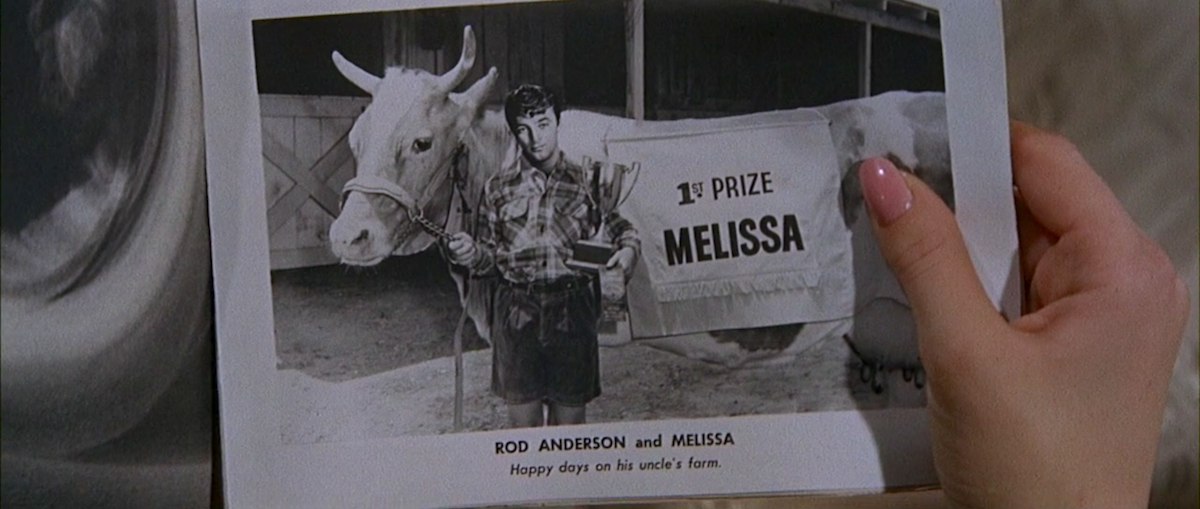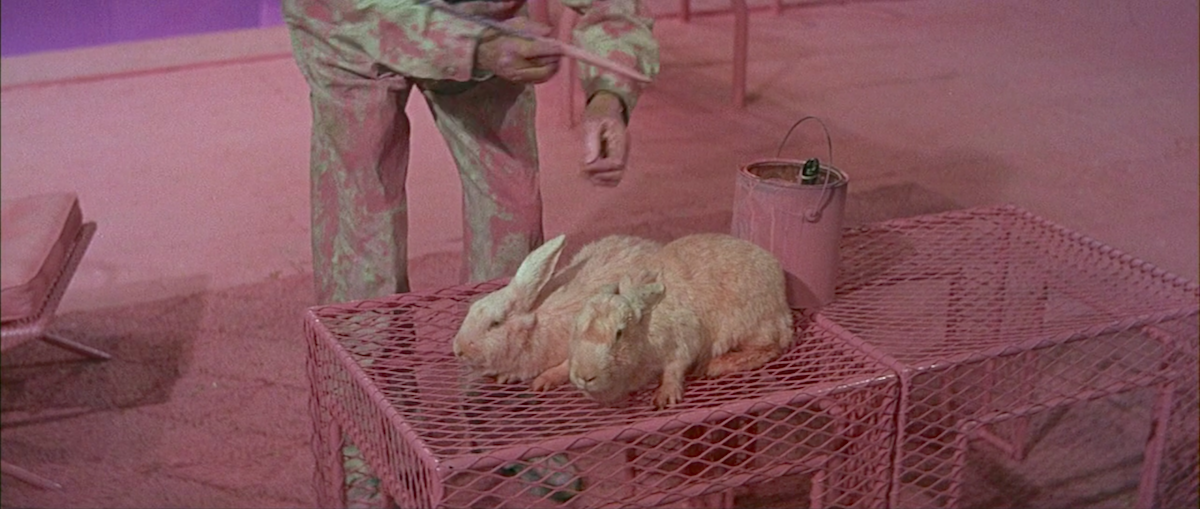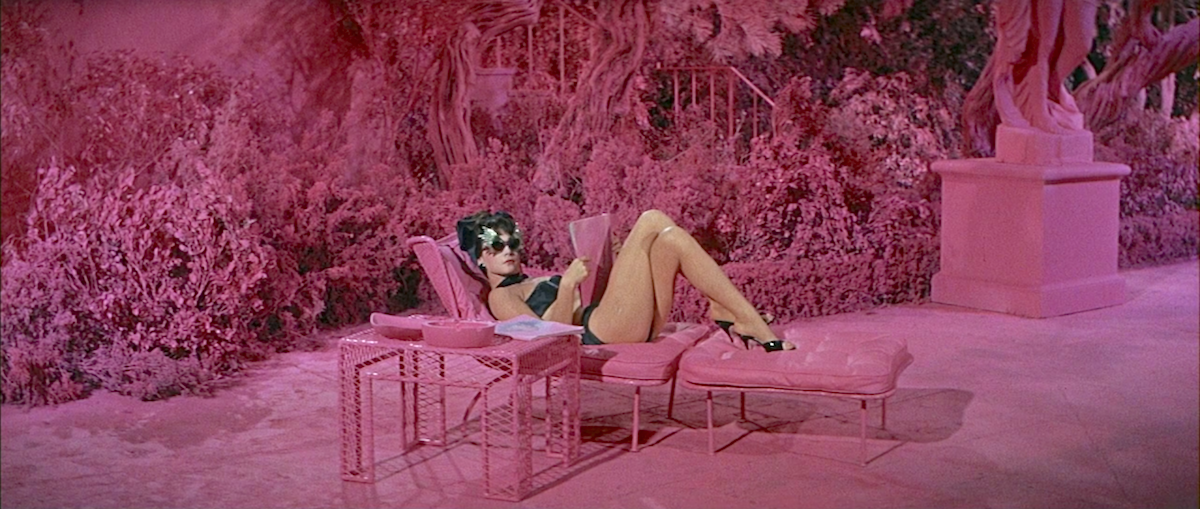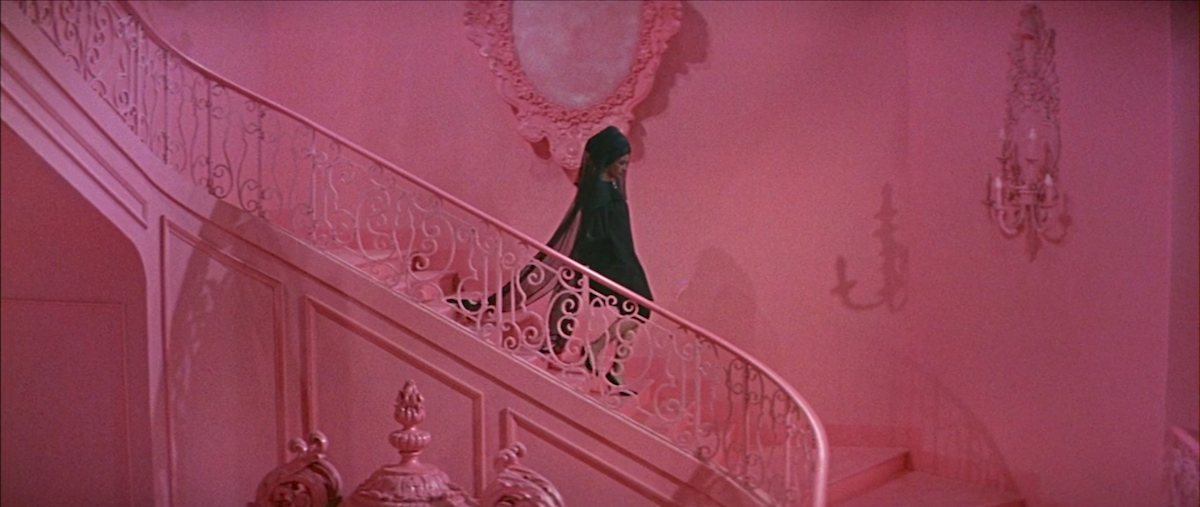"The Furniture," by Daniel Walber, is our weekly series on Production Design. You can click on the images to see them in magnified detail.
 Any excuse to talk about What a Way to Go! is a good excuse. But the centennial of Ted Haworth is an especially excellent excuse. He was nominated for six Oscars, starting with Marty in 1955. He won for 1957’s Sayonara. Highlights from the rest of his career include Some Like It Hot, The Beguiled, and Pat Garrett & Billy the Kid.
Any excuse to talk about What a Way to Go! is a good excuse. But the centennial of Ted Haworth is an especially excellent excuse. He was nominated for six Oscars, starting with Marty in 1955. He won for 1957’s Sayonara. Highlights from the rest of his career include Some Like It Hot, The Beguiled, and Pat Garrett & Billy the Kid.
But none of those movies could hold a candle to the astonishing level of creativity on display in What a Way to Go! The epic 1964 comedy of love and loss stars Shirley MacLaine as Louisa May Foster, a many-time widow and heiress. Each husband, with one particularly tragic exception, begins the marriage as a near-pauper who wants nothing but love. But their passion inevitably leads them on a wild pursuit of wealth, which tends to end in a coffin. It should be noted, of course, that Louisa herself has little interest in cash.
There are far too many brilliant design elements to fit into a single column...
Instead, I’m going to take a tip from My New Plaid Pants and steal the idea of Thursday’s Ways Not to Die. Here are the four deaths of Louisa’s husbands, murdered with style by art directors Haworth and Jack Martin Smith and set decorators Stuart Reiss and Walter Scott.
Louisa’s first husband is Edgar Hopper (Dick Van Dyke), a charming man who owns an unassuming little hardware store. Initially, he and Louisa are giddily content with their simple life. But the honeymoon period ends when his rival in love and business, Leonard Crawley (Dean Martin), gets under his skin. Edgar goes retail crazy.
His office becomes overwhelmed with evidence of what-a-way-to-go-1960s executive equipment, including an armada of memo recorders.
It’s only a matter of time until he quite literally works himself to death. The excess of business is his undoing, underlined by its ever-ridiculous accoutrement.
Distraught, Louisa heads to Paris. There she meets Larry Flint (Paul Newman), a painter living the bohemian lifestyle. They share a series of tiny bathtubs, eat baguettes and fall deeply in love.
But it happens again. Larry invents a machine that paints in response to sound. After feeding it some Beethoven, he makes his first major sale. All of a sudden he’s a man possessed, turning out canvas after canvas until he’s the most sought after artist in Paris.
In a moment of real frenzy, he turns on Tchaikovsky’s Symphony No. 4 – the one nicknamed “Fate.” It’s a commission for Neiman Marcus, they’re paying him $150,000. Spurred by the music, his orchestra of machines goes rogue. Soon they’ve got him surrounded.
And then, with one last boom, he’s gone.
So that’s one husband down to an excess of office supplies, another to an excess of contemporary art. The third husband, then, is a relief. Rod Anderson, Jr. (Robert Mitchum) is already filthy rich when he meets Louisa. He invites her to join him in the “Lush Budget Production” that is his life.
His heart isn’t in it, though, which she admires. He just wants to go back to his farm and the embrace of his beloved cows. This makes it even more cruel when he meets his demise at the hoof of a bull.
Which leads Louisa to husband #4, an unsuccessful clown who lives in a houseboat. Unfortunately, just before retirement, Pinky Benson (Gene Kelly) finally connects with the audience. He rockets to stardom and surrenders to ego and excess beyond imagining. Everything at the mansion is painted pink, from the walls to the rabbits.
The pool is pink, the patio is pink, even the plants are pink.
And when he gets trampled by his fans, his pink coffin is escorted down his towering pink staircase.
The moral of all this crazy design isn’t terribly complex, but it doesn’t have to be. What a Way to Go! is an irrepressible delight, a comedy of ever-escalating creativity and unstoppable charm. It’s as colorful a legacy as any production designer could hope for.


